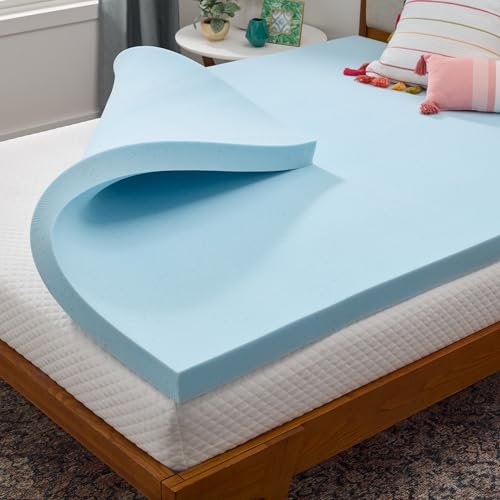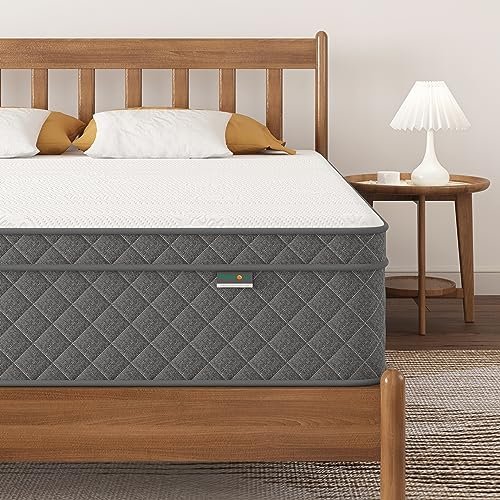
Say Goodbye to Wobbles: The Ultimate Guide to a Rock-Solid Bed Frame
Is your bed frame more of a trampoline than a sleep sanctuary? Do creaks and wobbles wake you up, or worse, keep you from falling asleep in the first place? You’re not alone! A shaky bed frame isn’t just annoying; it can impact your sleep quality and even lead to premature wear and tear on your mattress.
But don’t despair! Making your bed frame sturdy doesn’t require a furniture expert or a whole new bed. With a little DIY spirit and some simple steps, you can transform your wobbly frame into a stable, silent foundation for truly restful nights. Let’s dive in and learn how to make your bed frame sturdy and reliable!
Why is My Bed Frame Wobbly Anyway? Common Culprits
Before we fix it, it helps to understand why your bed frame might be less than rock-solid. Here are the usual suspects:
- Loose Fasteners: Over time, screws, bolts, and nuts can simply loosen from everyday use, causing joints to become unstable.
- Worn or Damaged Joints: If the wood is stripped around screw holes, or if metal connections are bent or cracked, the joints won’t hold tight.
- Insufficient Support: Not enough slats, flimsy slats, or a lack of a central support beam (especially for larger beds) can cause sagging and instability.
- Uneven Legs: An imbalance in leg height or damaged glides can lead to an uneven, wobbly base.
- Poor Assembly: Sometimes, the initial setup wasn’t quite right, leaving gaps or unsecured connections.
Before You Begin: Gather Your Tools
You likely have most of these lying around!
- Screwdriver set: Phillips and flathead.
- Wrench or socket set: For bolts and nuts.
- Allen keys: If your bed frame uses them.
- Wood glue: For wooden frames, incredibly effective!
- Wood shims or felt pads: To level uneven legs.
- L-brackets or corner braces: (Optional, but excellent for extra reinforcement).
- Drill with pilot bit: If adding new screws or brackets.
- Measuring tape and level: For checking evenness.
- Flashlight: To peer into dark corners.
- Safety glasses: Always a good idea when working with tools.
Step-by-Step Guide: How to Make Your Bed Frame Sturdy
Let’s get that bed frame feeling like new!
Step 1: Dismantle (Partially) and Inspect
First things first, clear everything off your bed. Remove your mattress, box spring (if you have one), and any existing slats. This gives you full access to the frame.
- Visually inspect every part: Look for cracks, bends, stripped screw holes, or any visible damage to the wood or metal. Pay close attention to corners and joint connections.
- Listen to the frame: Gently shake different sections to pinpoint exactly where the instability is coming from.
Step 2: Tighten All Fasteners
This is often the simplest and most effective fix.
- Go through every single bolt, screw, and nut on your bed frame. Use the appropriate screwdriver, wrench, or Allen key.
- Turn clockwise to tighten. You’ll be surprised how many are loose!
- For wooden frames: Be careful not to overtighten wood screws, as this can strip the wood and make the problem worse. Tighten until snug, but don’t force it.
- For metal frames: Ensure all bolts are firmly secured, making sure metal components are flush against each other.
Step 3: Reinforce Loose Joints with Wood Glue (For Wooden Frames)
If tightening fasteners didn’t entirely solve the wobble, especially at wooden joints, wood glue is your secret weapon.
- Carefully disassemble the wobbly joint.
- Apply a generous amount of wood glue to both surfaces of the joint that connect. The glue acts as a filler and a powerful adhesive.
- Reassemble the joint immediately and tighten the fasteners. The glue needs to set while the joint is held firmly in place.
- Wipe away any excess glue with a damp cloth before it dries.
- Allow the glue to cure completely (usually 24 hours) before putting weight back on the frame. This step is crucial for long-lasting stability.
Step 4: Add Extra Support: Slats and Center Support
One of the biggest culprits for a saggy, unstable bed is insufficient support beneath your mattress.
- Assess your slats: Do you have enough? Most mattresses require slats to be no more than 2-3 inches apart. Are they thick and sturdy enough? Thin, flimsy slats will inevitably sag.
- Add more slats if needed: You can purchase additional wooden slats or cut pieces of plywood to fit. Ensure they are securely fastened to the side rails to prevent shifting.
- Install a center support leg/beam (especially for Queen, King, and California King beds): This is absolutely essential for larger beds to prevent mattress sagging and frame instability. If your frame doesn’t have one, consider adding a sturdy beam running down the middle with adjustable legs that reach the floor. This transfers weight directly to the floor, significantly enhancing stability.
Step 5: Stabilize Uneven Legs
A single wobbly leg can destabilize your entire frame.
- Use a level: Place a level across different parts of your bed frame to identify any unevenness.
- Shim it up: If a leg is shorter or the floor is uneven, use wood shims or dense felt pads underneath the leg to create a level surface. Cut the shims to size and carefully tap them into place until the leg is firm and level.
- Check leg glides/feet: Ensure all feet or glides are intact and making full contact with the floor. Replace any damaged ones.
Step 6: Reinforce Corners and Connections (Optional, but Highly Recommended)
For an extra layer of rock-solid security, especially for wooden frames, consider adding hardware reinforcement.
- Install L-brackets or corner braces: These metal brackets provide powerful reinforcement to the frame’s corners and any major load-bearing joints.
- Use appropriate screws: For wooden frames, use wood screws that are long enough to penetrate both pieces of wood without going all the way through.
- Always drill pilot holes first! This prevents the wood from splitting when you drive in the screws.
- For metal frames: If there are attachment points that seem weak, you might be able to add additional bolts and nuts for extra security, but be mindful of the frame’s design.
Step 7: Check Headboard and Footboard Connections
These often overlooked connections can be a source of noise and wobble.
- Tighten all bolts and screws connecting the headboard and footboard to the side rails.
- If the connection points are worn, consider adding small pieces of felt or thin shims between the headboard/footboard and the frame rails to eliminate any play and create a tighter fit.
Step 8: Reassemble and Test
Once you’ve tightened, glued, reinforced, and leveled, it’s time to put everything back together.
- Carefully place your box spring (if used) and then your mattress back onto the frame.
- Gently test the frame for stability. Push on the corners, sit on it, and give it a little jiggle. You should feel a noticeable difference!
Advanced Tips for Ultimate Stability
- Consider a Plywood Base: For the ultimate in solid support, especially if you have many slats or want a completely flat surface, cut a thin sheet of plywood to fit over your existing slats. This provides a uniform, unyielding base for your mattress.
- Proper Placement: Whenever possible, place your bed frame against a sturdy wall. This adds an extra layer of stability and can reduce movement.
- Regular Maintenance: Make checking your bed frame a semi-annual routine. A quick check and tightening of fasteners can prevent wobbles from ever becoming a major issue again.
Common Mistakes to Avoid
- Ignoring the Problem: A small wobble can quickly become a big problem. Address issues early!
- Overtightening Screws in Wood: This can strip the wood, making it impossible for screws to hold securely. Tighten until snug, not forced.
- Not Using Pilot Holes: When adding new screws or brackets, skipping pilot holes is a recipe for cracked wood.
- Neglecting Center Support: Especially for larger beds, a robust center support is not optional – it’s crucial for longevity and stability.
- Using the Wrong Tools: Stripping screw heads or damaging bolts by using an ill-fitting tool will create more headaches.
- Forgetting About the Foundation: Your mattress foundation (box spring or slats) plays a huge role in overall bed stability. Ensure it’s in good shape.
Sweet Dreams Await!
Congratulations! You’ve taken the steps to transform your wobbly, noisy bed frame into a sturdy, dependable foundation for your sleep. Enjoy the peace of mind that comes with a stable bed and look forward to many nights of undisturbed, restful slumber. A little effort now means a lot more comfort later. Happy sleeping!
Frequently Asked Questions(FAQ)
Q. What are the most common reasons a bed frame becomes unstable or wobbly?
A. The most common reasons include loose bolts or fasteners, worn-out joints, inadequate center support, uneven floor surfaces, and poor initial assembly. Over time, movement, and the weight of the mattress and occupants can cause connections to loosen, leading to instability and creaking.
Q. How can I tighten a wooden bed frame that feels wobbly?
A. Start by disassembling the frame partially, if necessary, and inspect all joints. Tighten all bolts and screws securely, ensuring they are not stripped. For wooden joints, applying wood glue to the tenons before reassembling and clamping them while the glue dries can create a much stronger bond. Adding L-shaped metal corner braces to the interior corners where the side rails meet the headboard and footboard can also significantly increase stability.
Q. What can I do to stop my metal bed frame from creaking or squeaking?
A. Creaking in metal frames often comes from metal-on-metal friction or loose connections. Locate the source of the sound by pressing on different parts of the frame. Once found, tighten all bolts and screws. If creaking persists, try applying WD-40 or a silicone-based lubricant spray to the joints and connection points. Adding felt pads or rubber washers between metal parts where they connect can also help reduce friction and noise.
Q. Is center support crucial for bed frame sturdiness, and how can I add it?
A. Yes, center support is absolutely crucial, especially for full, queen, king, and California king size frames, to prevent the mattress and frame from sagging in the middle. To add it, you can install a sturdy metal or wooden beam running down the middle of the frame, often with adjustable legs that extend to the floor. Many hardware stores or bed retailers sell universal center support kits that are easy to install.
Q. My bed frame still feels shaky after tightening; what else can I check?
A. If tightening doesn’t solve the issue, inspect for bent or damaged parts, especially if it’s a metal frame. For wooden frames, check for cracked wood or stripped screw holes. Consider adding robust metal brackets to the inside corners of the frame where the side rails meet the headboard and footboard for extra reinforcement. Also, ensure the floor is level; shims placed discreetly under the bed legs can help level the frame and prevent rocking.
Q. What role do bed slats play in stability, and how can I improve them?
A. Bed slats provide direct support for your mattress and distribute weight across the frame. Weak, broken, or widely spaced slats can lead to mattress sagging, poor sleep quality, and overall frame instability. To improve them, ensure slats are evenly spaced (typically no more than 2-3 inches apart for most mattresses), are thick enough for your mattress type (especially important for foam mattresses), and are securely fastened to the side rails to prevent shifting. Adding more slats or replacing thin ones with thicker, sturdier wood can make a significant difference. Alternatively, a bunkie board can provide continuous, firm support.
Q. How can I prevent my bed frame from sliding on hard floors?
A. To prevent your bed frame from sliding on hard floors, apply non-slip furniture pads or rubber stoppers to the bottom of each bed leg. You can also place a large area rug or carpet gripper under the entire bed, or specifically under the legs, to create friction. For more stubborn sliding, specialized bed stoppers or cups designed to keep furniture legs in place are available.
Q. Are there long-term maintenance tips to keep my bed frame sturdy?
A. Yes, regular maintenance is key to long-term sturdiness. Periodically (e.g., every 6-12 months), check and retighten all bolts, screws, and fasteners on your frame. Inspect for any signs of wear, cracks, or loose joints. Lubricate metal joints if creaking starts to re-emerge. Ensure all center support legs are still making firm contact with the floor. Cleaning away dust and debris from joints can also prevent interference with connections.
Q. What types of brackets or hardware are best for reinforcing a wobbly frame?
A. For wooden frames, heavy-duty L-shaped or corner brackets made of strong steel are excellent for reinforcing interior corners where the side rails meet the headboard and footboard. T-plate connectors can also be used on flat surfaces. For metal frames, ensure all original connection hardware is present and consider upgrading to heavier-duty bolts and nuts with lock washers if the existing ones are insufficient or prone to loosening.
Q. Can a poor foundation or mattress contribute to the feeling of an unstable bed frame?
A. Yes, absolutely. A worn-out box spring, a sagging foundation, or an old, unsupportive mattress can make the entire bed feel unstable, even if the frame itself is perfectly sturdy. Before solely blaming the frame, ensure your mattress and foundation (if applicable) are in good condition and providing adequate support. If they are failing, they can transfer uneven stress to the frame and create a perception of instability that is not inherent to the frame itself.
Related Articles
7 Top Full Size Bed Frames: What is the Dimensions of a Full Size Bed Frame and More!
Getting a good night’s sleep often starts with the right bed, and for many, a full-size bed is the perfect sweet spot between a twin and a queen…
How Much Is a King Size Sleep Number Smart Bed
How Much Is a King Size Sleep Number Smart Bed? Your Guide to Understanding the Investment Recommended Product: Select Comfort Air Bed Chamber for Sle…
How Much Does a Sleep Number 360 Smart Bed Cost
How Much Does a Sleep Number 360 Smart Bed Cost? Recommended Product: Sven & Son Classic Adjustable Bed Base — head and foot lift, massage, under-…



